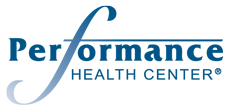The truth is you have a lot of nerve!
- There are more nerves in your body than stars in the Milky Way.
- The human brain alone consists of about 100 billion neurons. If all these neurons were lined up it would for a 600 mile long line.
- The nervous system transmits impulses at 100 meters per second, or 224 miles per hour
- There are 43 different pairs of nerve which connect the nervous system to every part of your body. 12 pairs exit in your brain and 31 pairs are connected to your spinal cord..
The longest nerve in the body is the sciatic nerve. It is made up of nerve roots from 5 levels of your low back and sacrum (L4-S3) and ends at the tip of your toes. The sciatic nerve is about the size of your thumb as it passes through your buttocks. The sciatic nerve travels in the spaces between the large muscles in your leg (often with the arteries and veins). Sciatica is the term used when the sciatic nerve gets irritated and causes pain that radiates down the leg. We treat sciatica successfully every day in our office.
The sciatic nerve can get entrapped anywhere from where the nerves exit the spine to the toes. When a nerve loses its ability to glide, or move, within it pathway the function of the nerve can be corrupted. There are areas where the sciatic nerve is more frequently entrapped. One is the tarsal tunnel. You’ve heard of carpal tunnel. The tarsal tunnel is in the foot, just below and behind the inside of your ankle bone (or medial malleolus). Another common entrapment site is the piriformis muscle (one of the deep muscles of your buttocks).
There are functional diagnostic tests to determine if and where the sciatic nerve is entrapped. Active Release Techniques® (or ART®) has specific protocols to release entrapped nerves. There are about 35+ ART® certified providers in Massachusetts and only 10+ ART® Nerve Entrapment certified providers, of which 3 practice at Performance Health Center. It amazes me on how many of the patients we meet have been living in pain, sometimes for years with sciatic nerve entrapment. Having an entrapped sciatic nerve can manifest in many ways, not only leg pain. Since nerve entrapments are a functional condition it requires a functional solution and ART® provides one.
Recently I saw a patient who had bilateral foot pain for 3 years, initially caused by wearing bad running shoes too long. Over the 3 years before I meet her, she was labeled with having many different pain syndromes from multiple medical providers. She even had nerve release surgery on both her tarsal tunnels. The day I met her, she gave me her detailed history and I performed an exam with included sciatic nerve entrapment screening. I uncovered poor motion of the joints of her low back and sciatic nerve entrapment. The function test of the sciatic nerve was so obvious she understood and felt the tension as I performed the test maneuver. When I explained to her what I thought was the problem, that her sciatic nerve was entrapped at the tarsal tunnel, and told her I thought I could help her, she teared up. She told me that of all the doctors she had seen over the years, I gave her the most thorough exam, explained her problem in a way she could understand it and gave her hope.
The good news is that after 8 treatments she is doing much better. The pain level is significantly reduced. She can walk without pain. She is not running yet, but will be within the next 2 months. She had a functional problem caused by faulty biomechanics of her spine and sciatic nerve pathway. Our functional treatment approach includes manipulation of her low back (where the nerves that make up the sciatic nerve exits the spine), ART ® on the muscles of the LB and leg, plus sciatic nerve entrapment ART® protocols, and Kinesio® Taping to minimize the tension on the sciatic nerve at the tarsal tunnel between treatments. It is not possible to correct 3+ years of faulty motor patterns in the body overnight, but just like braces on teeth, if we continue to put a demand on the body, it will change.
Getting our patients out of pain is usually the easy part of treatment. The next and most important phase is the rehabilitation, or re-education to optimize the body’s function. Of course our patients have responsibilities too. They need to improve the ergonomics at work and play. They receive stretches and strengthening exercises when appropriate, and are an active participant in their treatment.
If you or anyone you know is sick and tired of being sick and tired, and think they have done everything to get better. Remind them if they have not had the benefit of ART®, they have not done everything! As always, after the initial examination, if we do not think we can help, we will make the appropriate referral. If you have any questions, please feel free to email me at: drbradweiss@performancehealthcenter.com
